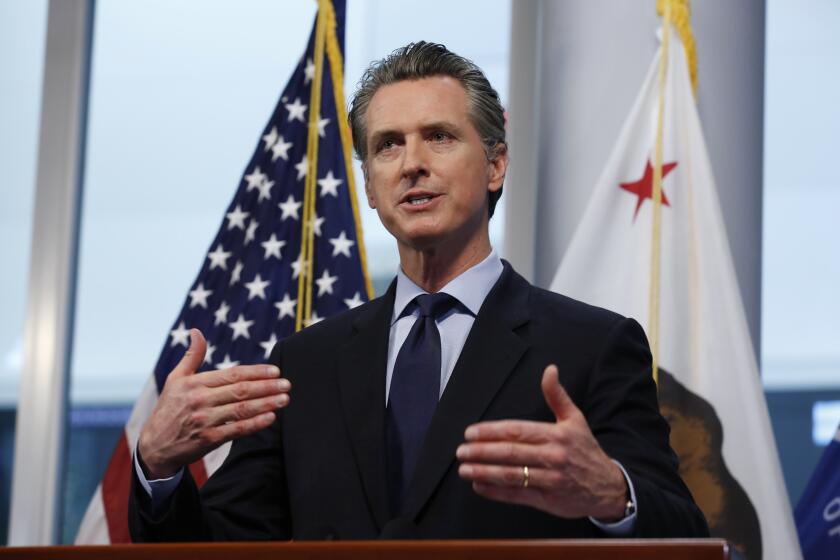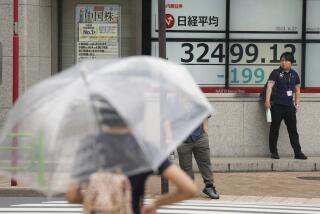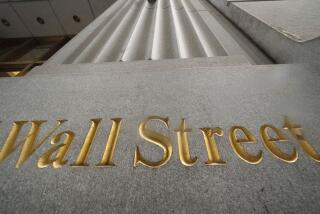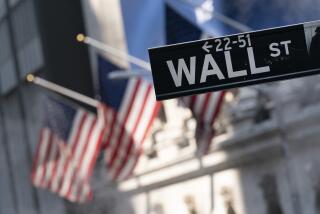Stocks climb as officials discuss slowly reopening the economy
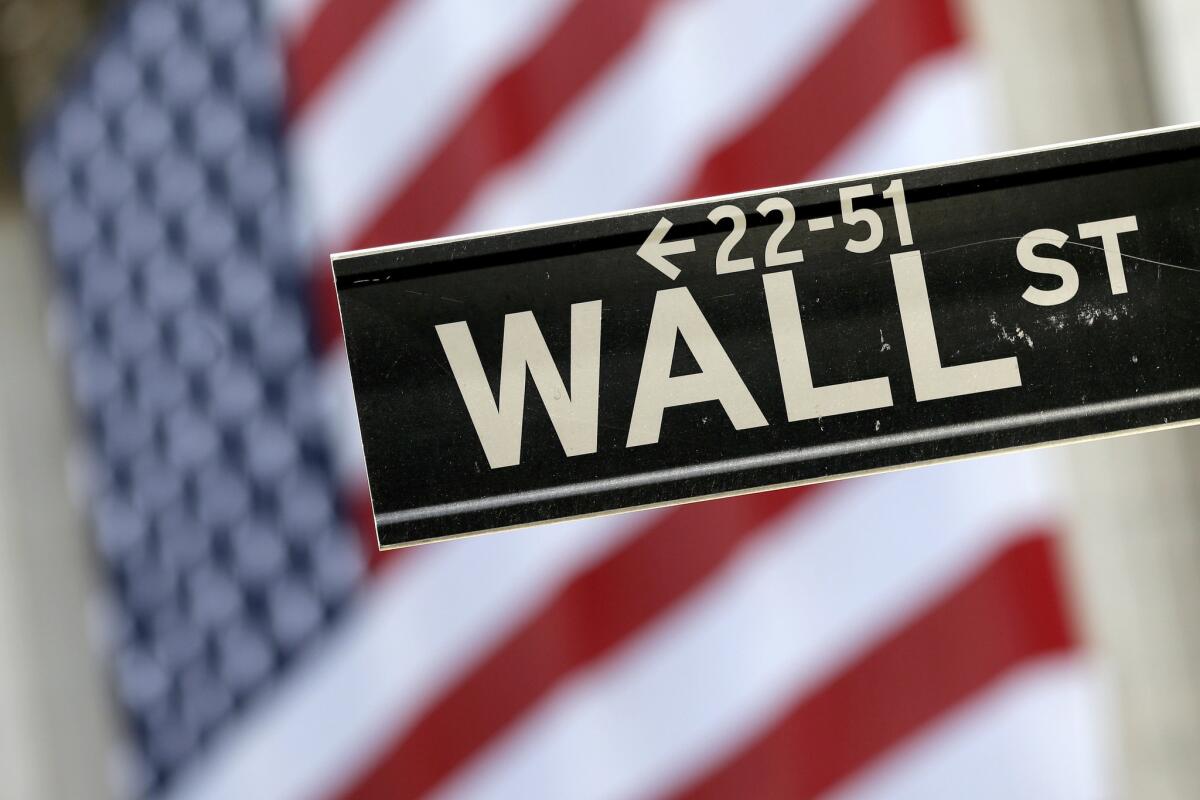
- Share via
Technology companies led stocks higher on Wall Street on Tuesday as investors focused on how and when authorities may begin to ease the business shutdowns and the limits on people’s movements that were imposed to slow the spread of the coronavirus.
Big companies also started reporting their first-quarter earnings, giving investors a peek into how the outbreak was affecting them. Traders will be poring over companies’ quarterly report cards over the next few weeks to learn how the outbreak has affected corporate America’s prospects for profit growth this year.
The Standard & Poor’s 500 index climbed 3.1%, erasing its losses from Monday. The Dow Jones industrial average advanced 2.4%. The technology-heavy Nasdaq rose 3.9%, aided by strong gains by Microsoft, Apple and several chipmakers.
The broad rally came amid new signs that government officials are considering how to gradually reopen the economy.
President Trump has been discussing with senior aides how to roll back federal social distancing recommendations that expire at the end of the month. And governors around the U.S. have begun collaborating on plans to reopen their economies in what is likely to be a drawn-out, step-by-step process to prevent the coronavirus from rebounding.
Gavin Newsom said he will work with Oregon and Washington to develop a plan to reopen their economies and heal after the coronavirus restrictions are lifted.
The discussions follow some signs that the outbreak may be leveling off in some of the hardest-hit areas, including New York. In Italy, Spain and other places around Europe where infections and deaths have begun stabilizing, the process of reopening economies is already underway, with certain businesses and industries allowed to reopen in a calibrated effort aimed at balancing public health against their countries’ economic well-being.
“Wall Street is encouraged simply by the conversation of a reopening of the economy,” said Sam Stovall, chief investment strategist at CFRA.
The S&P 500 rose 84.43 points to 2,846.06. The benchmark index surged 12% last week, though it remains about 16% below the all-time high it reached in February. The Dow gained 558.99 points to 23,949.76. The Nasdaq climbed 323.32 points to 8,515.74. The Russell 2000 index of smaller company stocks rose 25.29 points, or 2.1%, to 1,237.33.
Technology stocks powered much of the gains. Microsoft climbed 4.9% and Apple rose 5.1%.
Johnson & Johnson climbed 4.5% after reporting a stronger profit for the first three months of the year than Wall Street expected. It also raised its dividend, bucking a broader trend as companies try to conserve cash, even though the healthcare giant also slashed its outlook.
JPMorgan Chase slid 2.7% and Wells Fargo fell 4% after the banks posted results that missed analysts’ forecasts and said they were bracing for losses on loans after millions of Americans became unemployed.
Tentative optimism that the outbreak has begun to plateau in some areas, plus unprecedented infusions of support from the Federal Reserve and the government, have helped drive stocks higher this month. But this week stocks could be in for more volatility as companies serve up their first-quarter results.
Although Wall Street expects profits will be down for most companies in the S&P 500, the focus is on what management teams have to say about their prospects for profits for the rest of the year. That might prove difficult. With all the uncertainties about when economies may reopen, many companies have simply pulled their profit and sales forecasts for the year altogether.
Given how big and unprecedented the coronavirus shock to the economy has been, analysts are struggling to guess how bad corporate earnings will get hit. At Deutsche Bank, Chief Global Strategist Binky Chadha said his usual methods of forecasting earnings based on economic growth or surveys measuring business activity “are essentially broken.”
“It’s incredibly hard during normal times to have an economic forecast, but today, you’re kind of flying blind,” said Brent Schutte, chief investment strategist at Northwestern Mutual Wealth Management. “What companies have to say will be incredibly important.”
Analysts are forecasting a drop of roughly 10% in earnings per share for S&P 500 companies for the first quarter and 21% for the second quarter.
It’s going to be a tough couple of quarters for corporate America: The economy will likely take “two steps forward and one step back” as it recovers, said Jeff Buchbinder, equity strategist for LPL Financial. “We know this is going to be one of the most severe recessions we have ever seen.”
There are more than 1.94 million confirmed coronavirus cases worldwide, led by the United States with more than 583,000, according to a tally by Johns Hopkins University.
Bond prices were little changed. The yield on the 10-year Treasury held steady at 0.75%.
Oil prices fell sharply despite an agreement reached over the weekend by OPEC, Russia and other oil producing nations to cut output starting May 1 by nearly 10 million barrels a day, or 10% of daily global supply. Benchmark U.S. crude fell $2.30, or 10.3%, to $20.11 a barrel. Brent, the international standard, dropped $2.14 to $29.60 a barrel.
More to Read
Inside the business of entertainment
The Wide Shot brings you news, analysis and insights on everything from streaming wars to production — and what it all means for the future.
You may occasionally receive promotional content from the Los Angeles Times.
